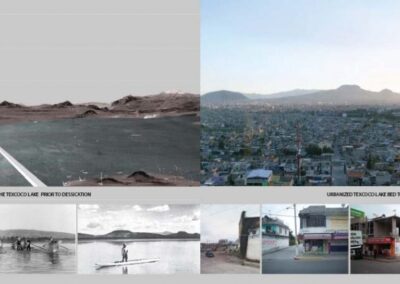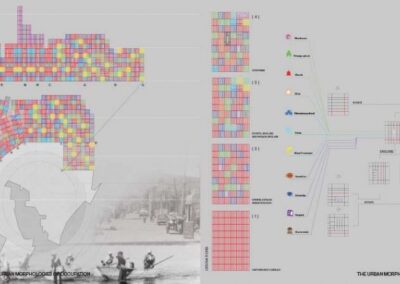Irregular, Illegal, Informal documents the unique spatial, social, and political structures enabling irregular settlements in Chimalhuacán, a municipality of more than 600,000 residents partially built in the desiccated Texcoco Lakebed, to the east of Mexico City. The development of irregular settlements is the most pervasive mechanism of land acquisition, housing provision, and service delivery for the poor in the Mexico City metropolitan area. The massive proliferation of this type of development in the last 40 years responds to the late industrialization of Mexico and the centralization of most production around the capital. Together with the rapid urbanization, the scarcity of affordable residential land in the urban core and the absence of effective mechanisms for housing the approximately 35% of the population working outside of the formal economy has generated a thick “cinturón de la miseria” (misery belt) surrounding Mexico City.
Focusing on Chimalhuacán, our contention is that this ostensibly informal development is in fact carefully planned and executed as a means of social, political, and spatial control of disenfranchised populations by politically motivated “social organizations.” In the absence of effective governmental policies to provide housing for the expanding population of the urban poor, these organizations seize unoccupied land, often in disregard of existing ownership, environmental or regulatory structures. Our research specifically tracks initiatives sponsored by the social organization Antorcha Campesina, a group with strong political ties to the Partido Revolucionario Institucional (PRI) that is involved in the provision of housing and social services to informal dwellers. We contend that Chimalhuacán’s spatial politics have ensued through intricately designed patterns ofdevelopment and service provision intended to segment the municipality into a cluster of mutually exclusive enclaves. Each enclave is a unit of control, dividing the municipality into statistical abstractions of population in order to suppress collective consciousness. In Chimalhuacán, patterns of enclave development repeat, mirror, and tessellate with quasi-computation proceduralism, constituting a program of expansion and population management scripted to control, occupy, urbanize, and repeat. By parsing Chimalhuacán’s development over time, the project renders these strategies visible and reveals the potential for ameliorative future design to instigate critical awareness.
Sponsored by
University of Michigan Office of Research, Taubman College of Architecture and Urban Planning Research Through Planning, Michigan-Mellon Project on Egalitarianism and the Metropolis
Dissemination
Shenzhen -Hong Kong Bi-City Biennial of Architecture and Urbanism (2017 UABB)
Date
2016 – 2018
Main Research Design Collaborator
Nishant Mittal
Research Assistants
Pedro Duhart Benavides (lead) with Michael Amidon, Mario Daniel Avila Salazar, Olaia Chivite Amigo, Erika Linenfelser, Dhara Mittal, Jiushuai Zhang




